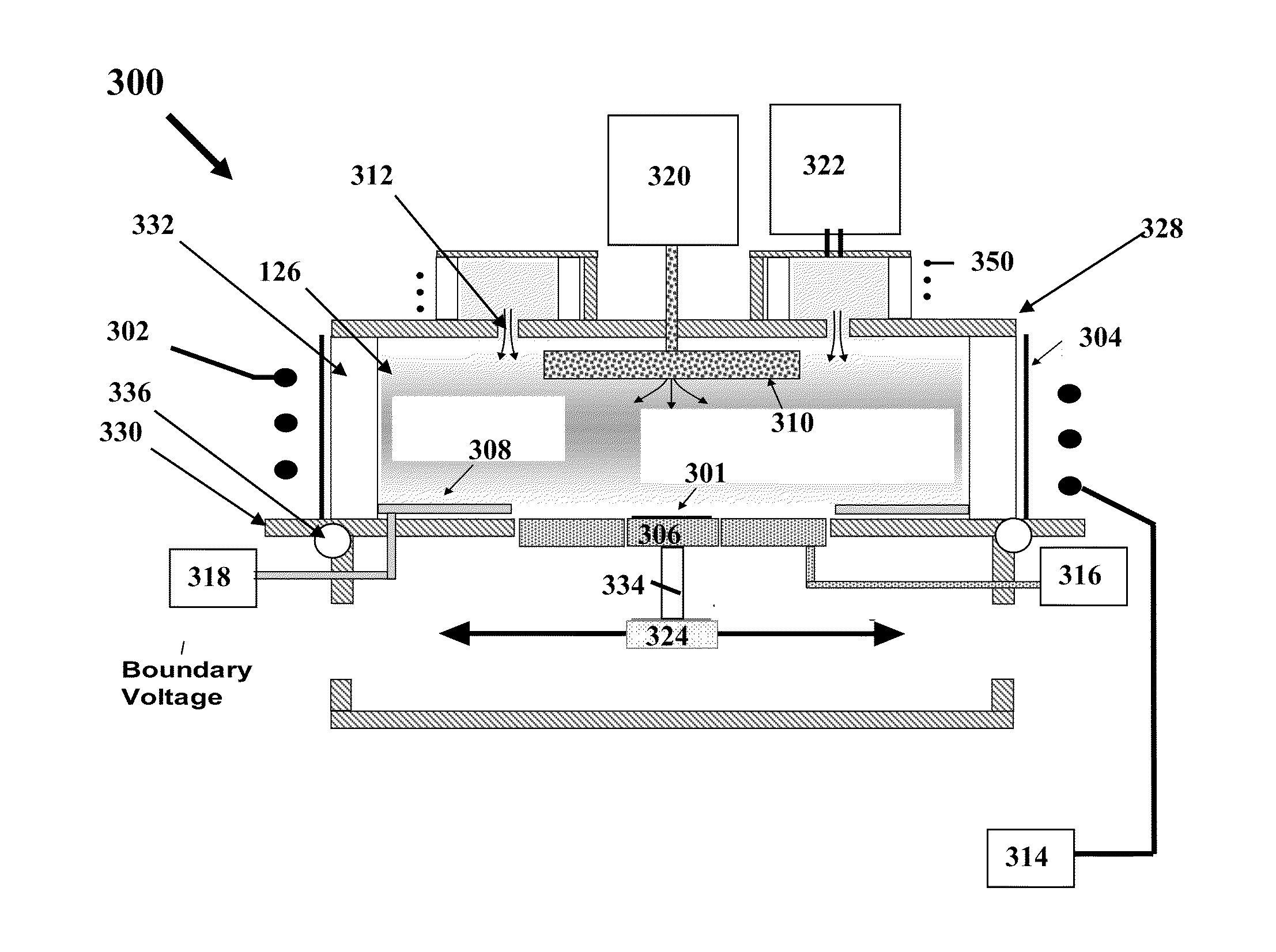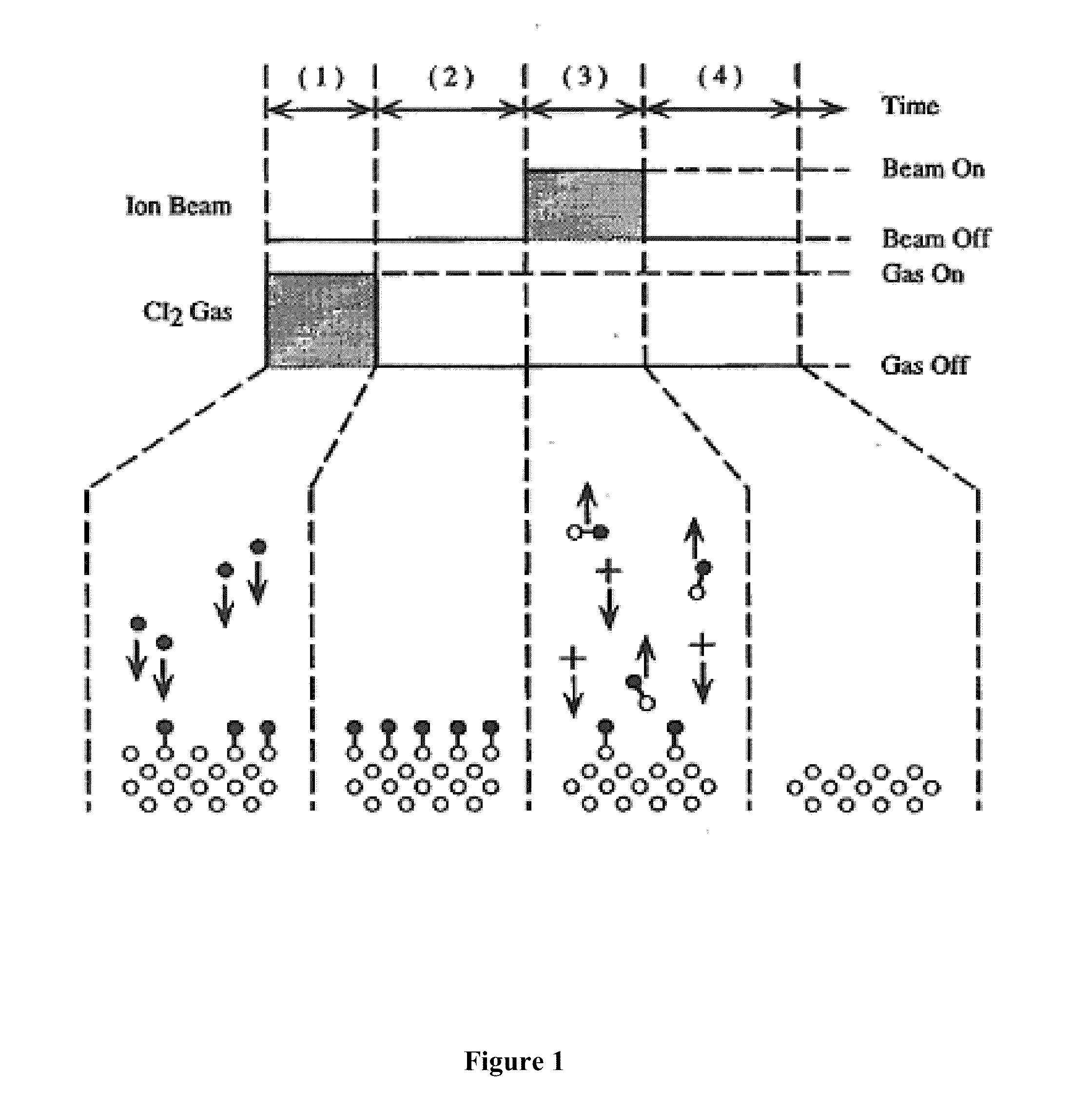Atomic layer etching with pulsed plasmas
a plasma etching and atomic layer technology, applied in the direction of electrical discharge tubes, decorative arts, electrical equipment, etc., can solve the problems of etching process self-limiting, substrate removal with traditional alet processes requires a very long etching cycle, and the etching cycle is approaching and exceeding 150 seconds per cycl
- Summary
- Abstract
- Description
- Claims
- Application Information
AI Technical Summary
Benefits of technology
Problems solved by technology
Method used
Image
Examples
examples
[0085]Experimental apparatus: FIGS. 3 and 6 show schematics of the experimental apparatus used in this study. The inductively coupled plasma (ICP) was ignited by a 3-turn spiral coil in a 17.8 cm long, 8.6 cm inside diameter alumina tube. A copper Faraday shield prevented capacitive coupling between the coil and the plasma. The discharge tube was connected to a cubical stainless steel (SS) chamber through an adaptor flange. A water channel in that flange served to cool the Faraday shield and prevent overheating of the discharge tube. The system was pumped by a 300 l / s turbo pump backed by a dry pump. Pressure was measured by a MKS 629 capacitance manometer mounted downstream of the plasma at 0.1 Torr full scale setting. A calibration experiment, without plasma, showed that the pressure at the discharge region was about 30-40% higher than that measured at the position of the pressure gauge. Pressures reported below are all calibrated values and refer to the plasma region.
[0086]A stai...
PUM
| Property | Measurement | Unit |
|---|---|---|
| DC voltages | aaaaa | aaaaa |
| DC voltages | aaaaa | aaaaa |
| DC voltages | aaaaa | aaaaa |
Abstract
Description
Claims
Application Information
 Login to View More
Login to View More - R&D
- Intellectual Property
- Life Sciences
- Materials
- Tech Scout
- Unparalleled Data Quality
- Higher Quality Content
- 60% Fewer Hallucinations
Browse by: Latest US Patents, China's latest patents, Technical Efficacy Thesaurus, Application Domain, Technology Topic, Popular Technical Reports.
© 2025 PatSnap. All rights reserved.Legal|Privacy policy|Modern Slavery Act Transparency Statement|Sitemap|About US| Contact US: help@patsnap.com



